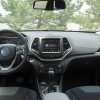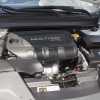Drastic changes are hard for a lot of us. Whether it's moving to a new state or country, the arrival of new family member, the prospect of a new job, etc: we wonder if this change will be good or bad for us. The same is true for any automaker. If they have a vehicle that is doing very well in sales and/or reputation, or are planning to resurrect an iconic nameplate, they know that a huge change could make or break the vehicle.
Consider the Jeep Cherokee. The off-road brand built the Cherokee from 1977 to 2001, earning a reputation for being a rough and go-anywhere SUV. When news broke that Jeep would be bringing back the Cherokee nameplate, many Jeep fanatics were excited. Many of those fanatics cut their teeth on the Cherokee and were hoping for a return of the rough and ready SUV they loved. Sadly that wouldn’t be case when Jeep revealed the new Cherokee and it didn’t look or drive like the vehicle they knew. This led to many complaining about how the new Cherokee wasn’t like the old one and Jeep should be ashamed.
But lets step back and look at this new Cherokee. Did Jeep make a critical mistake or is the new Cherokee a reflection of a marketplace that has changed?
Let’s be blunt about the new Cherokee’s styling. It’s very polarizing to say in the least. The overall look appears to have been the result of one team doing the front, while another team handled the back. The front end has a rounded shape with three different pods for lights - from top to bottom: LED running lamps, headlamps and fog lamps - and the iconic seven slot grille donning a black coating on the Altitude model. The back end is slightly rounded as well, with the taillights sitting on the farthest points of the tailgate. Finishing off the Cherokee is a set of blacked-out eighteen-inch wheels. In pictures, the Cherokee may look like a bit of a hot mess. But in person, I actually found the Cherokee to be good looking, and appreciated that Jeep decided to go a different route with the styling.
The Cherokee’s interior is nothing like the exterior, which for some is a good thing. The dash layout is conventional, with a conservative design and logical placement of the controls. Material quality is noticeably improved from the outgoing Liberty with wide swaths of soft-touch plastic around the interior, and high-quality cloth wrapping the seats. Nothing in the Cherokee’s interior made me think, ‘well they went a bit cheap here.’ Interior space is also very impressive with back seat passengers getting a pleasant amount of head and legroom. Cargo space is decent with 24.6 cubic feet with the rear seats up and 54.9 cubic feet with the seats folded.
The Cherokee Altitude comes standard with a 5-inch UConnect infotainment system, but my tester came with the optional 8.4-inch UConnect system. This system is one of the easiest and most responsive infotainment systems I have ever come across. One item I should mention with this version of UConnect for Cherokee is that there is no navigation standard. For that, you’ll need to head over to your local Jeep dealer to have it installed. At first, I was a bit upset at there being no navigation. But after a few moments, I appreciated Chrysler’s decision. More people are turning to their smartphones to provide navigation, or just don’t want to spend the money on navigation.
The Cherokee comes with the choice of two different engines. The base is the 2.4L MultiAir four-cylinder, while a 3.2L V6 is optional. The Cherokee Altitude I had came equipped with the base four-cylinder which makes 184 horsepower and 171 pound-feet of torque. Either engine comes paired up with a nine-speed automatic transmission. Being a Jeep, you have the choice of three different four-wheel drive systems. My tester was equipped with the base Jeep Drive I system.
The 2.4L provides decent power for any situation that could be thrown at it. Whether it was driving in city traffic or merging onto the highway, the 2.4 never felt lacking for power. The 2.4 also doesn’t lack engine noise either. Leaving a stop, the engine is keen on letting you know that it's working. When you settle into a cruise, the engine settles down to a murmur. The nine-speed has been quite the headache for Chrysler, as it caused the Cherokee launch to be delayed for several months due to a number of problems. Unfortunately, Chrysler still has a few more kinks to iron out with it. To start, the transmission would shudder when upshifting through the first three gears. The other was the transmission wouldn’t go into ninth gear when driving on the freeway. I would have to shift into ninth manually. Now since I drove the Cherokee, Chrysler has issued an update to the nine-speed to fix some of these problems. I’m hoping in the near future to get behind the wheel of another Cherokee to see if it's made a difference.
One item I sadly didn’t get chance to try was how the Cherokee drove off the beaten path. I hope to rectify that the next time I get a Cherokee.
Fuel economy-wise, the Cherokee Altitude 4X4 is rated by the EPA at 21 City/28 Highway/24 Combined. My week with the Cherokee saw an average of 23.1 MPG.
The Cherokee Altitude’s ride and drive characteristics is very much in line with other compact crossovers.The suspension is comprised of MacPherson strut setup up front and a four-link setup in the rear which provides a very comfortable ride on even some of the roughest roads the Metro Detroit area has to offer. Steering is nicely weighted and features good on-center feel.
To go back to the question asked at the beginning of this review, I don’t think Jeep made a mistake with the new Cherokee. Sadly, the time when a boxy, go-anywhere SUV has passed. Jeep realized this and built the Cherokee accordingly, but made sure it still had a bit of Jeep DNA in it. For the most part, I have to say I’m very impressed with the Cherokee. But there is the elephant in the room and that happens to be the nine-speed transmission. I like the idea, but the execution leaves a bit to be desired. For now, I’m going to put the Cherokee on the wait and see list.
Disclaimer: Jeep Provided the Cherokee Altitude, Insurance, and One Tank of Gas
Year: 2014
Make: Jeep
Model: Cherokee
Trim: Altitude 4X4
Engine: 2.4L MultiAir 16-Valve Inline-Four
Driveline: Nine-Speed Automatic, Four-Wheel Drive
Horsepower @ RPM: 184 @ 6,400
Torque @ RPM: 171 @ 4,600
Fuel Economy: City/Highway/Combined - 21/28/24
Curb Weight: 3,941 lbs
Location of Manufacture: Toledo, Ohio
Base Price: $26,495
As Tested Price: $30,485 (Includes $995.00 Destination Charge)
Options:
Comfort/Convenience Group - $1,995
Customer Preferred Package 24K - $500.00
Uconnect 8.4A AM/FM/BT/Access - $500.00
William Maley is a staff writer for Cheers & Gears. He can be reached at [email protected] or you can follow him on twitter at @realmudmonster.










-3707742431.jpg.06edf8e14f4ccf35c60d4774a543cc11.jpg)


Recommended Comments
Join the conversation
You can post now and register later. If you have an account, sign in now to post with your account.
Note: Your post will require moderator approval before it will be visible.